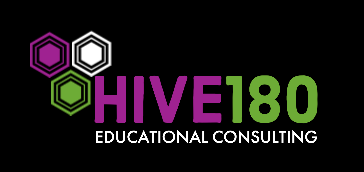
Lesson 2: The Hive Mindset – Maximizing Efficiency and Focus
In the intricate world of bees, every action and role within the hive is meticulously calculated to maximize productivity, efficiency, and overall hive health. Each bee’s work is intentionally distributed, ensuring that every task is aligned with the bee’s development stages, skills, and the hive’s needs, preventing overwork and redundancy. This deliberate approach ensures the hive functions seamlessly and maintains focus on high-impact activities. Additionally, bees are masters of focus, avoiding distractions and concentrating on tasks that yield the highest return on investment for the colony. Similarly, charter schools can thrive and retain quality talent by adopting a structured approach that aligns resources and roles efficiently, by maintaining a clear focus on impactful initiatives aligned with their mission and instructional model.
Organizational Structure: The Right Number and Roles
Bees maintain a balanced and efficient hive by ensuring they have the right number of bees in each role. There are foragers, nurses, guards, and even undertaker bees, each crucial to the hive’s success. This balance prevents overwork and ensures that all necessary tasks are covered without redundancy. For charter schools, having the right number of staff in the right roles is equally important. Overstaffing can lead to inefficiencies and unnecessary costs, while understaffing can cause burnout and decreased productivity.
Working with charters for so many years, I typically see new charters plan for way too much administration and some way too little.
I often see schools full of “deans” – all valuable and even mission related, but not thoughtfully planned to align with growth of the school and financial viability. Sometimes this is coupled with a lack of other critical administrative staff to address finance and compliance matters. Lots of people in administration creates amazing work-life balance, allows you to implement your model, and avoids burn out of leadership; however, an overabundance of administration (both leadership and administrative/clerical) can create sustainability issues. It’s critical schools understand their state’s funding formula and to use this information to make informed decisions about organizational structure and timing for bringing on certain roles.
On the other hand, many founding charters and even some operational schools plan for a very, very lean administration where everyone in the front office wears a ton of hats, particularly the school leader who may be juggling not only executive director duties, but also principal duties. This is particularly common with founding leaders who feel the need to own and control everything to ensure their vision is implemented with fidelity. While supporting greater sustainability, this creates very quick burn out, turn over in key roles, and distracts from core functions of position, leading you away from your mission. Also, this approach also leads to compliance issues or the school model not being implemented well, as the school leader or other team members may lack the expertise or the time to implement systems and oversight protocols or to get into classrooms frequently enough. Boards have to help guide these leaders and to establish a not only financially sustainable structure, but also one that is functionally sustainable with properly distributed leadership and administration of core school functions. Finding the balance between too much and too little administrative staff is a delicate balance but an important one to negotiate.
The Importance of Strategic Work Allocation
Bees are masterful at resource management, with each worker bee having a specific role that ensures tasks are completed efficiently. Forager bees do not lay eggs, and guard bees do not forage. Similarly, charter schools must adopt a strategic approach to work allocation to avoid overloading staff and causing inefficiencies. This begins with mapping out all necessary functions and developing detailed job descriptions that consider education, credentialing, and experience. Evaluating the organizational structure to ensure the right number of positions doing the right kinds of work with the right person in the seat is crucial. Balancing workloads thoughtfully prevents burnout and ensures that tasks are manageable. Additionally, assessing workflows to identify and address bottlenecks, and implementing cross-training programs can enhance operational resilience. Founders often find themselves leaving their lanes to dip into other work that not only is not a good use of their time, but also creates morale issues and confusion about “Who’s on first.” Boards also must stay in their lane, creating policy and guardrails and leaving their school leaders in charge of management.
Avoiding the Trap of “Shiny New Initiatives” and Chasing Money
Much like bees avoiding flowers that don’t produce ample nectar, charter schools must be wary of “shiny new initiatives” that promise much but deliver little. These distractions can drain resources, burden staff, and detract from core objectives. Instead, schools should evaluate potential projects and initiatives based on their alignment with strategic goals and their potential return on investment.
Consider a school that was enticed by a trendy new educational technology promising to revolutionize learning. However, after a thorough cost-benefit analysis, it became clear that the implementation would require extensive training, significant financial investment, and time that could be better spent enhancing existing programs. The school decided against adopting the technology, choosing instead to focus on proven instructional methods that directly supported their educational goals.
Chasing money is another trap for many charters. Some grants require significant investment of time and human capital to administer, report, and go through monitoring. Boards and leaders should ask themselves hard questions before seeking out a grant … is it mission aligned? Do we have a financial investment that will not take away from our current budget? Do we have the human capital, policies and systems in place to administer the grant? Will the funding yield outcomes that move us forward with our mission? If any of those answers is no or maybe … then the grant should not be pursued, because chasing money can pull staff and funding away from core functions of the school.
Thriving Through Focus and Efficiency
Just as bees thrive with a carefully organized structure and focusing on tasks that ensure the hive’s success, charter schools can achieve sustainable success by thoughtfully staffing their school, defining roles clearly, prioritizing productivity, avoiding unnecessary initiatives, and fostering a culture of efficiency and focus.
